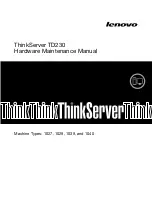
4-11
Figure 4-7 Set Cache Mode window
The
Set cache mode
option is available only when the following conditions are met:
{
A PMC controller (except PMC HBA or UN-RAID-P460-M4 RAID controller) is used.
{
On the
Configure basic settings
page, the
Global write cache
parameter is set to
Drive
specific
.
Parameters
Parameters on the
Manage
physical drives
tab:
•
Device
—Screen-printed slot number or device ID of the physical drive.
•
Status
—State of the physical drive.
If a PMC controller is used, the physical drive states include:
{
Online
—The physical drive is already used to build a RAID array.
{
Ready
—The physical drive is initialized and can be used to build RAID arrays.
{
Raw
—The physical drive is a raw drive and must be initialized before it can be used to build
a RAID array.
{
Failed
—The physical drive is faulty.
If an LSI controller is used, the physical drive states include:
{
Online
—The physical drive is already used to build a RAID array.
{
Offline
—The physical drive is offline.
{
Unconfigured Good
—The physical drive can be used to build a RAID array.
{
Unconfigured Bad
—The physical drive is faulty.
{
Ready
—The physical drive can be used to build RAID arrays.
{
Optimal
—The physical drive is already used to build a RAID array.
{
Failed
—The physical drive is faulty.
•
Operation
result
—Result of the most recent operation performed on the physical drive.
•
Set cache mode
—Allows you to set the cache mode for the selected drives.
•
Initialize
—Allows you to initialize the selected drives.
A physical drive in Raw state must be initialized before it can be used to build a RAID array.
Initializing a physical drive erases all data on the drive and sets apart a small section of space
on the drive for storing RAID data.
•
Uninitialize
—Allows you to uninitialize the selected drives.
Uninitializing a physical drive erases all data including metadata on the drive, removes the
reserved space section and the system partition, and restores the drive to Raw state.
















































